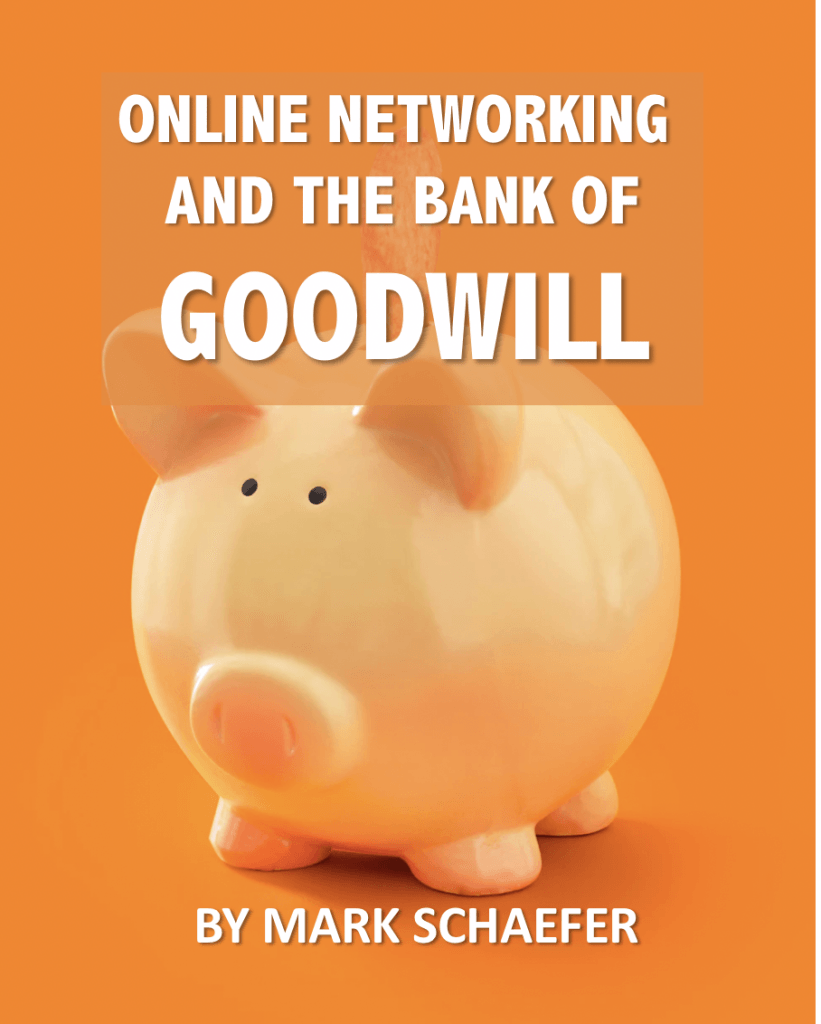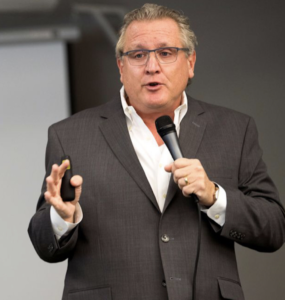
Here’s an exchange I had on LinkedIn that exposes a widespread problem with online networking strategy for many people …
Person I never heard of before: Hey Mark, what’s your favorite Pizza topping?
Me: Why would you want to know something strange like that?
It’s an ice breaker I use to start conversations. Everyone’s trying to sell something on LinkedIn 🙂
Me: The goal is not to sell something. It is to befriend people and build relationships that lead to business benefits. You are a stranger to me so figure out a way to be a friend through mutual value exchange and then things happen
Very true. Can I send you some of the products I am developing? Say, a video explaining my process of growth hacking?
Me: Just be a nice person. Help people. Pay attention to their needs. Don’t push stuff on them that they don’t want.
![]()
I get a lot of this sort of thing, and I understand it. Networking makes the world go ’round. But before you ask me to promote your book, share your link, or hop on a phone call to chit-chat, you need to have a networking strategy based on a “bank of goodwill.” Let me explain today how this works.
The power of reciprocity
There is a powerful human psychological driver around the idea of reciprocity. When somebody does you a favor, there is an overwhelming response to pay that favor back. Researchers show this exists in every culture on the planet. If somebody does something nice for you, you store that in your brain with a thought that some day, you have to pay that favor back.
Not every favor is the same, of course, especially on social media. A “like” requires very little personal investment and may hardly be noticed. But posting a kind review of person’s book, sharing a blog post, or even sending them a personal note can be a big deposit in the “bank of goodwill” that truly enables the online networking strategy.
If you make enough deposits in the bank of goodwill, at some point, you can feel entitled to make a withdrawal — asking for a favor in return. That’s how an online networking strategy works. So when anybody comes out of the blue asking to call me, show me a demo, or sell me something, it NEVER works, because they have not made a deposit in the bank of goodwill. They are just strangers trying to get my precious time for free.
There are exceptions of course, I rarely say no to a student or a person in true need, but in terms of business networking, you need to pay attention to deposits in the bank of goodwill.
The different types of banks
Not everybody has the same bank.
When I first started blogging nearly 12 years ago, I’ll never forget the thrill of receiving my first blog comment. Wow. Somebody actually took time to read my post and offer encouragement. What an amazing feeling. That was a deposit in the bank!
60,000 comments later, I still have that same feeling of appreciation, but it has a lower level of value deposit in my bank of goodwill, because there are just so many. A comment is still a wonderful act of kindness, but it doesn’t have the same impact like it did 10 years ago because the overall level of “noise” online has increased so much.
So the size of my “bank” has changed over the years. It may take five blog comments for a person to have my attention, compared to one in the old days.
On the other side, for a person just starting out in social media, a social share or a blog comment might be a huge deal!
It is going to take just a little bit of love to fill a new blogger’s bank. it would take a moderate amount of love to fill my bank to earn reciprocity. It would take an enormous amount of attention to earn a withdrawal from the bank of media stars like Seth Godin or Guy Kawasaki.
So, every person has a different “bank.”
The different types of deposits
Likewise, there are different values in the deposits that can fill a bank more quickly and earn reciprocity. Here is a scale completely made-up out of my head, but it would probably make sense to most people (lowest to highest)
- A “Like”
- A comment on a piece of content like a blog or video or social media post
- A social share on Twitter
- A social share on Facebook
- A social share on LinkedIn
- An email or post expressing appreciation
- A recommendation on LinkedIn
- A hand-written card or note
- Publishing consistent content that helps me learn
- A public Amazon review of a book
- A physical token of appreciation through the mail
- A post or video recommendation of my work
- A face-to-face meeting
- Hiring me to do a speech, workshop or consulting assignment
- An extraordinary favor that helps me through a business problem (people have offered free photography or design services, for example)
There is probably some invisible point system for every person in the world. I don’t know what that is. Something like 20 tweets equals one LinkedIn recommendation. Probably different for everybody.
But the main point is, before you earn the right to ask for favors, you have to deposit enough favors in the bank of goodwill. I hope this doesn’t come across as stuffy or crass. I am certainly not asking people to do me favors!
I’m simply trying to provide a rational and realistic view of how human nature works, because so many people seem to be oblivious to this basic fact. Most people in this world seem prepared to take, take, take without giving something first.
 Mark Schaefer is the executive director of Schaefer Marketing Solutions. He is the author of some of the world’s bestselling
Mark Schaefer is the executive director of Schaefer Marketing Solutions. He is the author of some of the world’s bestselling 

